In 2015, photographer Jean Stewart (1921- ) generously donated to the Library an extensive collection of her photographs relating to the Ballet Guild, later known as the Victorian Ballet.
Photograph by Jean Stewart. This work is out of copyright; H2015.96/19
Jean Stewart was born in Melbourne in 1921. She studied photography at R.M.I.T. and worked for 48 years as a radiographer, but her main interest was ballet. Her archive of ballet photographs (and Gilbert and Sullivan performances) dates from the late 1930s to the 1950s and includes productions of the Borovansky Ballet Company, the UK’s Ballet Rambert and whole seasons of the (Victorian) Ballet Guild. Jean Stewart was also Stage Manager for Laurel Martyn, founder of the Ballet Guild (later Ballet Victoria) [1], for ten years.

En Saga, the Borovansky Ballet, His Majesty’s Theatre, Melb, 1946.
Photograph by Jean Stewart. This work is out of copyright; H2015.96/14
In 2015 I had the pleasure of meeting Jean and we chatted about her ballet photographs and photographic practices of the day. Jean had her own darkroom and workshop at home where she developed negatives and produced prints. As she wryly commented, ‘there was no such thing as OH&S with the use of chemicals in those days!’ [2]
Ballet from the Dress Circle
Les Sylphides, Ballet Guild Company, Union Theatre, 1947
Photograph by Jean Stewart. This work is out of copyright; H2015.88/13
To establish some distance to shoot wide shots, Jean would sit in rows E and F in the dress circle at His Majesty’s Theatre, Melbourne, from where she could capture the whole stage. Her friends would often sit in front of her at the ballet and create shoulder space for her to shoot through. Anyone sitting next to Jean was asked not to clap as that would shake the camera on the unipod. Jean then went on to use a cable release to reduce any further vibrations.
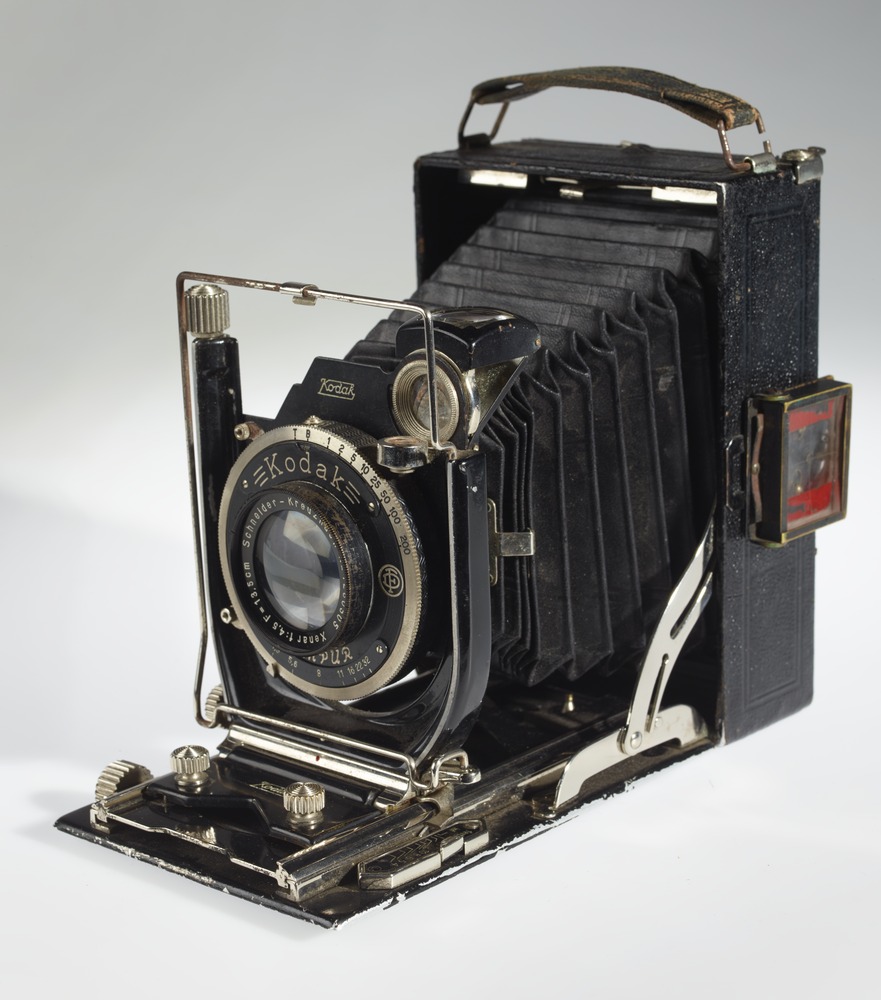
Jean’s Camera- the Kodak Recomar 33 compact folding bed camera
When Stewart first started taking photographs there were no single-lens reflex cameras (SLR) on the market in Australia. A SLR camera typically uses a mirror and prism system (hence ‘reflex’ from the mirror’s reflection) which allows the photographer to look through the lens and see what the camera will capture. This was contrary to Jean’s viewfinder camera where the image could be significantly different from what was captured.
At first Stewart used sheet film (H2015.220/1) to shoot the ballet. The sheets would be loaded into a film holder (H2015.221). Holders (which contained 10 or 12 films) were loaded and unloaded in the dark to protect film from premature exposure. The holder was inserted into the camera back on site and the dark slide (which protected the sheet film from light) was removed from the holder. The exposure was made, the dark slide replaced and the film holder was removed from the camera and replaced with a new holder of unexposed film.
Shooting with sheet film was time consuming and limited in the number of film exposures available. After a short time Jean had the camera adapted to take a film back of interchangeable 120 roll film. Not dissimilar to an adapted Autographic camera bed and 120 film holder (H2015.222) that she also kindly donated to the library.
Shooting live performances
Greig’s Concerto – piano in A minor, the Borovansky Ballet, His Majesty’s Theatre, Melb, 1946. Photograph by Jean Stewart. This work is out of copyright; H2015.96/11
Jean would set the lens to its widest aperture to capture the maximum light from the whole stage. She knew the ballets very well and could therefore select her shots at still moments in the performance in order to have minimum movement. This was the only way to achieve sharp images.
Working with available light
Swan Lake, Act II, the Borovansky Ballet, His Majesty’s Theatre, Melb, 1946.
Photograph by Jean Stewart. This work is out of copyright; H2015.96/2
Coppelia, the Borovansky Ballet, His Majesty’s Theatre, Melb, 1946.
Photograph by Jean Stewart. This work is out of copyright; H2015.96/2
Enlarging the negative in the darkroom and cropping the print.
In smaller theatrettes often shows were sold out and photographs could only be taken during rehearsals. In this instance all shots were taken full-stage and close-ups were created using the enlarger in the darkroom post shooting.
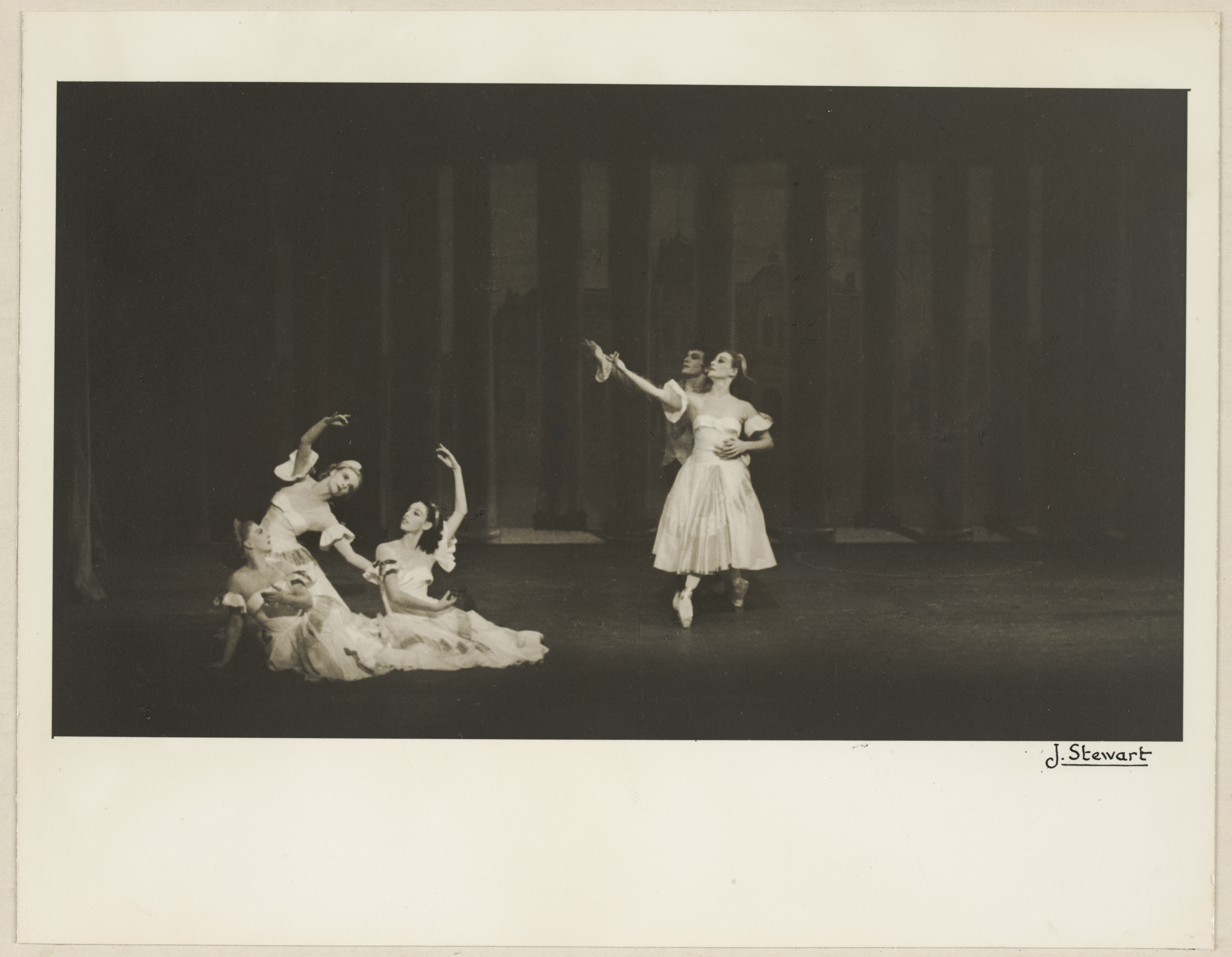
Ballade, Ballet Guild, 1947
Photograph by Jean Stewart. This work is out of copyright; H2015.88/39
Shooting close up during rehearsal
As Jean Stewart did not use a flash nor had the technology of a zoom or telephoto lens, one way for her to capture close up shots was to get physically closer to the subject and shoot the performers during rehearsal.
 En Cirque, Ballet Guild Company, Union Theatre, 1955
En Cirque, Ballet Guild Company, Union Theatre, 1955
Photograph by Jean Stewart. This work is in copyright; H2015.88/27
Laurel Martyn and Martin Rubinstein in ‘Blue Bird’, Ballet Guild, Union Theatre, 1947.
Photograph by Jean Stewart. This work is out of copyright; H2015.88/45
Stewart printed from black and white negatives that she processed in the darkroom working with various films. She printed with gelatin silver photographic paper, varying the look of photographs by printing with a range of surfaces, including pearl, matte and glossy.
Jean Stewart utilized the available photographic technology of the day and consequently produced highly atmospheric and moody images of the Borovansky Ballet and the Ballet Guild, later renamed Ballet Victoria.
References
[2] Jean Stewart conversation- visit to library 2015
[3] Chamberlain, Katherine McFarlane. Darkroom handbook: [Twenty-four actual experiments for beginners in printing, developing, lighting, enlarging and other fundamental photographic processes] , 1947 Chicago: Ziff-Davis.



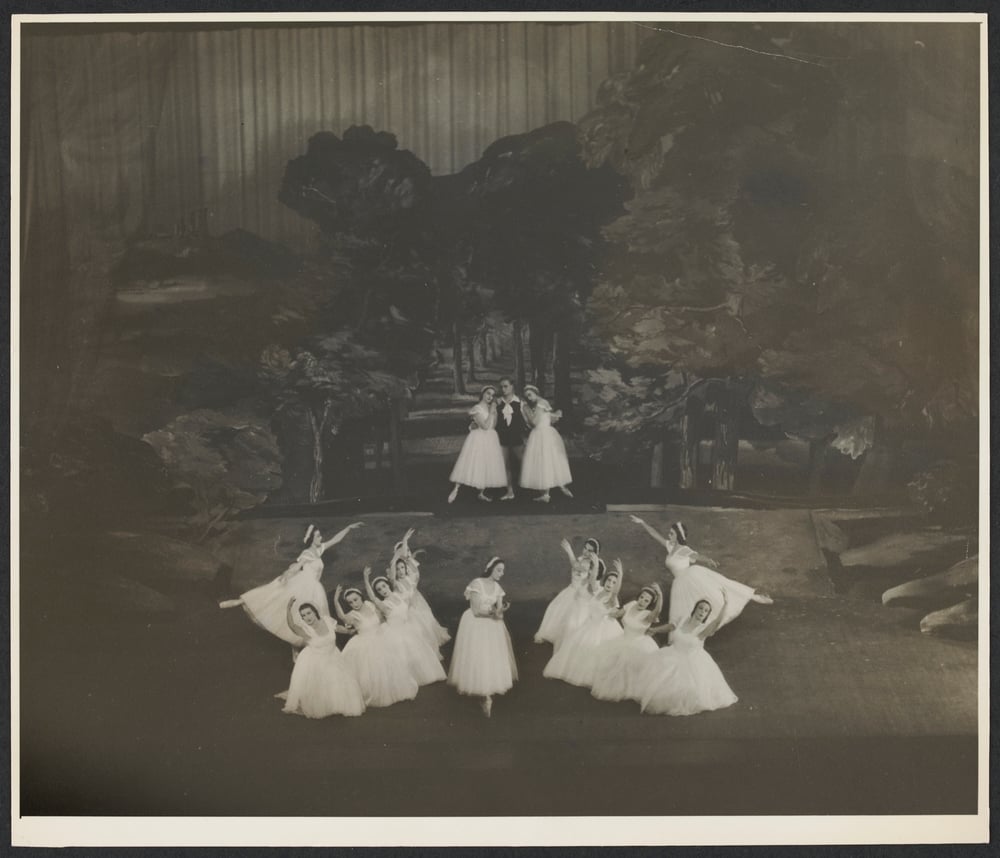
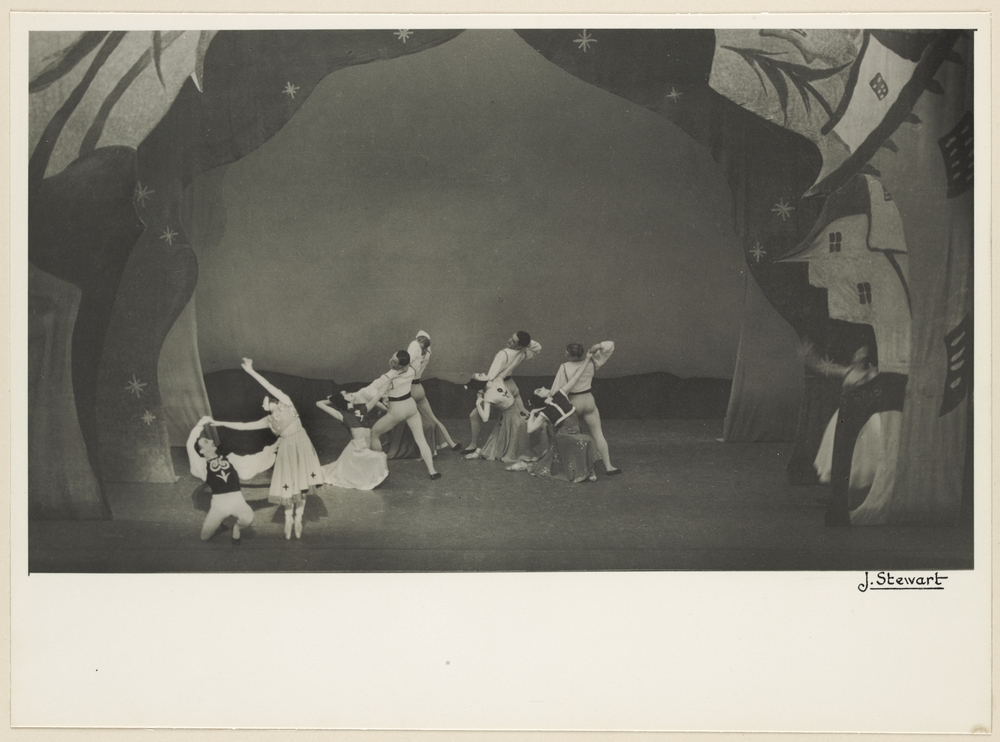


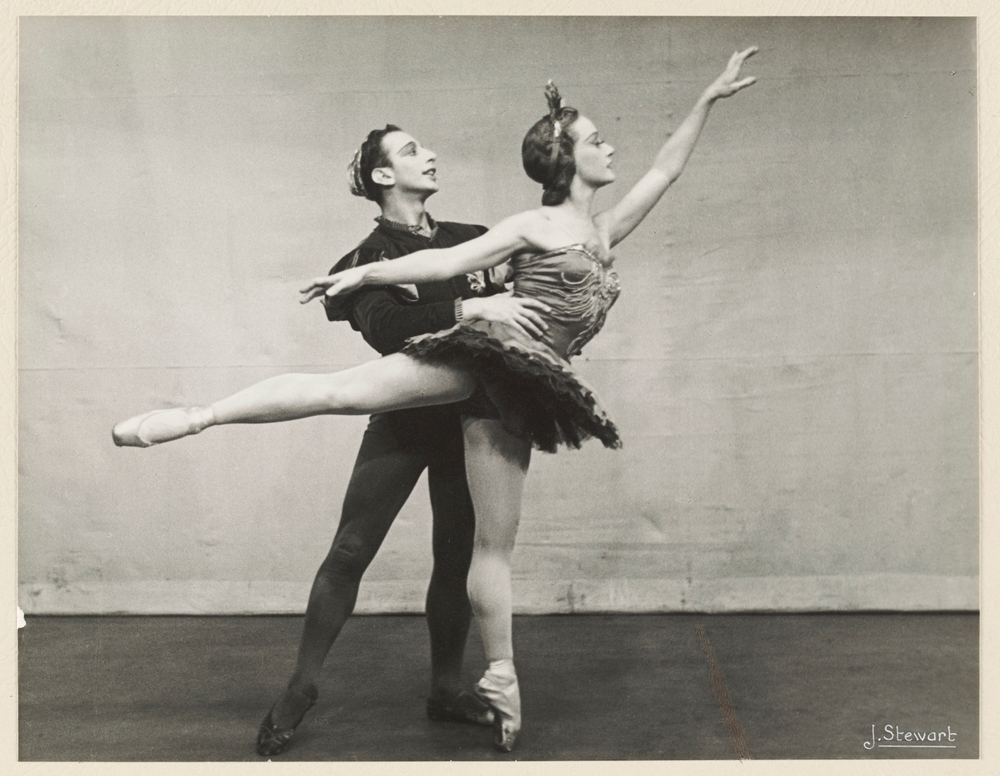

Lovely and informative post. Thank you Susan.
Great photographs and commentary.
Would *love* to see an exhibition of these photographs!
My uncle David Hunt danced in the 40s with the Rambert ballet he was photographed with Laurel Martyn
Hi Mel
How wonderful! I have come upon photographs of your uncle taken by Walter Stringer on TROVE in Ballet Rambert, 1947. Stunning photographs.
And thank you for your comments.
Susan Long
That’s interesting
I would love more details as I am a trustee of the Laurel Martyn Foundation but have no record of this
She had no connection to Rambert Ballet. How did they connect?
I know this is late, but the best dodging and burning tool is actually your hands. You can make all sorts of shapes instantly to fit whichever part you’re trying to burn or dodge – much faster than making wire or cardboard the right shape each time!
It was a pleasure and an honour to meet Jean (1921–2017). Her spirit, and the work and passion she put in to getting the perfect photo, have been beautifully written up by Blazenka Brysha, here: https://blazenkabrysha.com/2017/10/18/jean-stewart-ballet-photographer/
Great article about a Jean,s ballet photography. She was a friend of mine and. I have great photos of her taken down the coast at her beloved Eastern View if you are interested
Hi Diana,
THanks for reading the blog. If you’d like to fill out the Collection offer form with the details of the photos, a librarian will get back to you.
Thanks
Paul
Jean’s photographs are a treasure and how fortunate to have a friendship with such an amazing woman. And thank you for your kind offer of photographs relating to Jean.
Susan
Jean Stewart was one of the loveliest women that Ihave ever know. Her generosity to everyone who cared to listen was boundless. I had the privilege of spending time with her in her later years. My memories of our time together and our talk of ballet help to keep me sane and on a level path. My world is full of memories and things to remind me of that most wonderful person.
Jean’s photography is an important record of the history of ballet in Australia and I also had the pleasure of meeting Jean when she donated her collection of photographs to the library. An amazing and lively woman who related many interesting and amusing stories about photographing the ballet. Thank you for responding to the blog. Susan